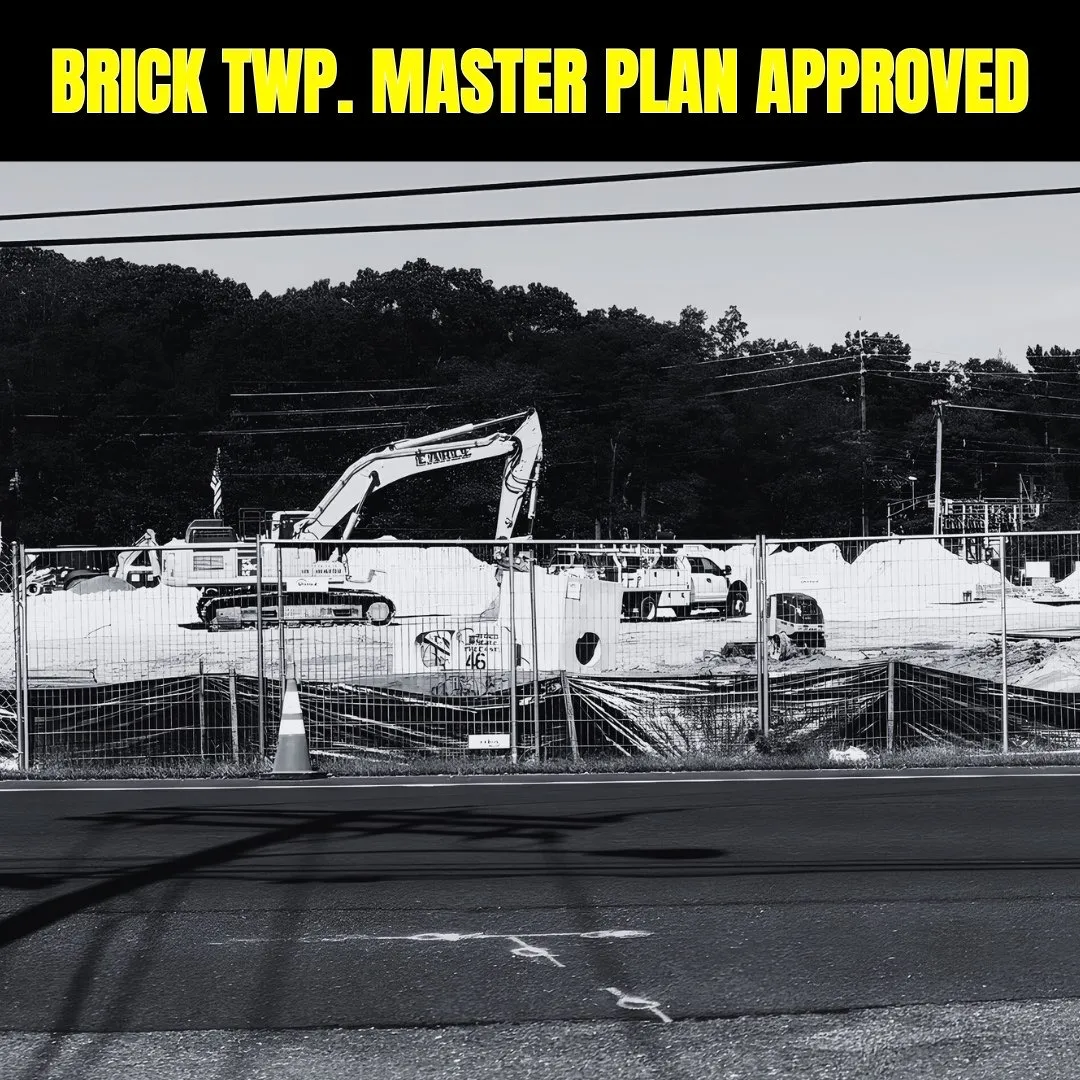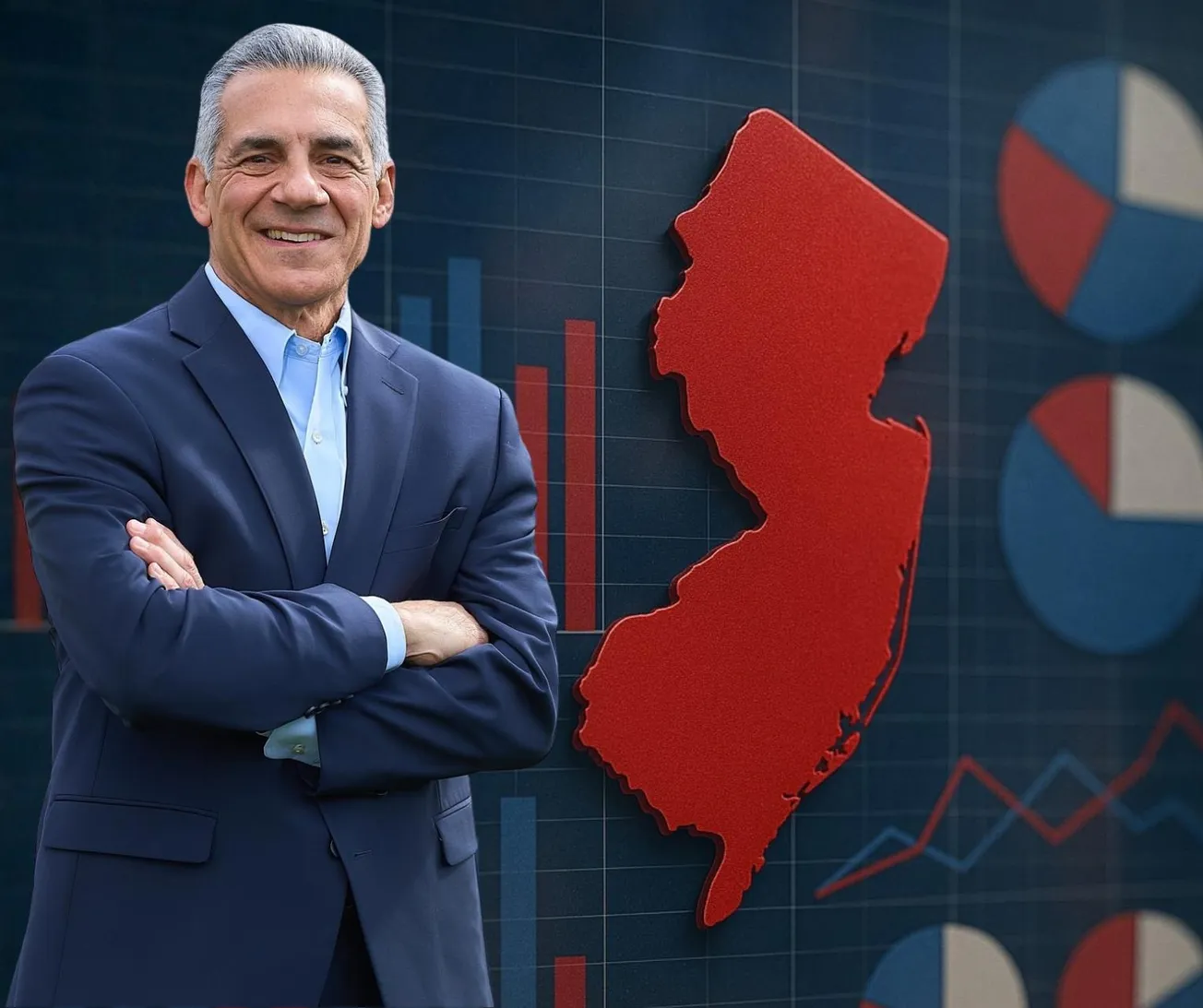Residents have sounded the alarm about how new development policies approved at last night’s Township Planning Board Meeting could attract spillover growth from neighboring towns, worsening the overdevelopment crisis Brick currently faces.
Brick Township's newly released Economic Development Master Plan has sparked serious concerns among long-time residents who worry the document's recommendations will accelerate an already problematic overdevelopment crisis by encouraging businesses from neighboring communities to relocate to an increasingly congested municipality.
The plan specifically codifies elements of the “Sustainable Land Use Pledge”, where Mayor Lisa Crate and the Democratic Council pledge to take into account neighboring municipalities concerns regarding land use decisions. The 481-page Master Plan acknowledges Brick's role as a regional economic hub but appears to embrace policies that could exacerbate the township's growing pains. The new Master Plan was approved unanimously.
Mayoral candidate Madeline Iannarone spoke out against the new Master Plan: “How can Lisa Crate’s planning board approve this when our Republican team has been saying for months that this was a bad deal for Brick. When I am elected Mayor, my team and I will appoint a planning board that will repeal this awful deal for Brick.”
Mixed-Use Development Drives Regional Business Migration
Most concerning to residents is the plan's aggressive push for mixed-use development zones. The document states that "The Township has expanded the Village Zone along sections of Mantoloking Road, Drum Point Road, and Herbertsville Rd. This zoning encourages mixed-use developments that combine residential and commercial spaces, promoting a pedestrian-friendly environment". Residents’ fears about the Sustainable Land Use pledge reducing parking spaces to reduce car usage in Brick were not unfounded.
Conservatives argue this policy creates a magnet effect, drawing development pressure from neighboring municipalities.
Infrastructure Already Overwhelmed
Community survey results included in the plan reveal widespread resident opposition to additional development. The document reports that "Traffic congestion was overwhelmingly identified as the top barrier to economic development (91.2%), along with high property taxes or business costs and limited public transit options".
Resident concerns appear well-founded given the plan's acknowledgment of serious infrastructure limitations. "The Township of Brick's transportation network currently limits accessibility and business growth potential. Severe traffic congestion on major arterials—Route 70, Route 88, and Brick Boulevard reduces business visibility and customer convenience".
The situation becomes more troubling when considering regional development pressures. Neighboring Lakewood Township has experienced "exceptional growth of 55.9%" between 2010 and 2023, creating spillover development pressure throughout Ocean County. Recent regional initiatives have even proposed merging Lakewood with surrounding townships including Brick, highlighting the interconnected nature of development pressures.
Streamlined Approval Process Concerns
The plan recommends "Streamlining Processes and Reducing Red Tape" and calls for "shorten[ing] approval timelines" and creating a "user friendly regulatory framework". Critics worry these changes will make it easier for businesses to relocate from neighboring communities where approval processes may be more rigorous.
The document acknowledges that current regulations serve important community protection functions, noting that "Developer-funded infrastructure improvements ensure proportional investment by new development, enhance pedestrian connectivity, and maintain community design standards". Reducing these requirements could shift infrastructure costs to existing taxpayers while encouraging additional regional business migration.
Regional Economic Magnetism
The plan's emphasis on business attraction appears designed to pull economic activity from throughout the region. It specifically calls for "Targeted business attraction, particularly in sectors like healthcare, light/small scale manufacturing, technology, and tourism".
Given that mixed-use developments are known to create "bustling, vibrant neighborhoods that attract a diverse range of businesses" and that "retail stores, restaurants, and service providers benefit from the constant foot traffic generated by nearby residential and office spaces" , Brick's aggressive development policies could drain commercial activity from neighboring municipalities.
Community Resistance Documented
Survey responses included in the plan document overwhelming resident opposition to continued development. One resident wrote: "Stop building! When I was born this was a really nice beach town. It is now over built overpopulated over taxed horrible to drive around here". Another stated: "Brick is already too crowded - focus on re-development instead of more people and cars".
The plan acknowledges this sentiment, noting that residents expressed concerns about "address[ing] public opposition to development shortcomings in livability". However, the document's recommendations appear to prioritize economic growth over these legitimate community concerns about overdevelopment and quality of life deterioration.
As Brick moves forward with implementing these policies, residents remain concerned that the township's aggressive approach to economic development will continue attracting regional business activity, worsening traffic congestion, straining infrastructure, and fundamentally altering the community character that drew residents to the area in the first place.






